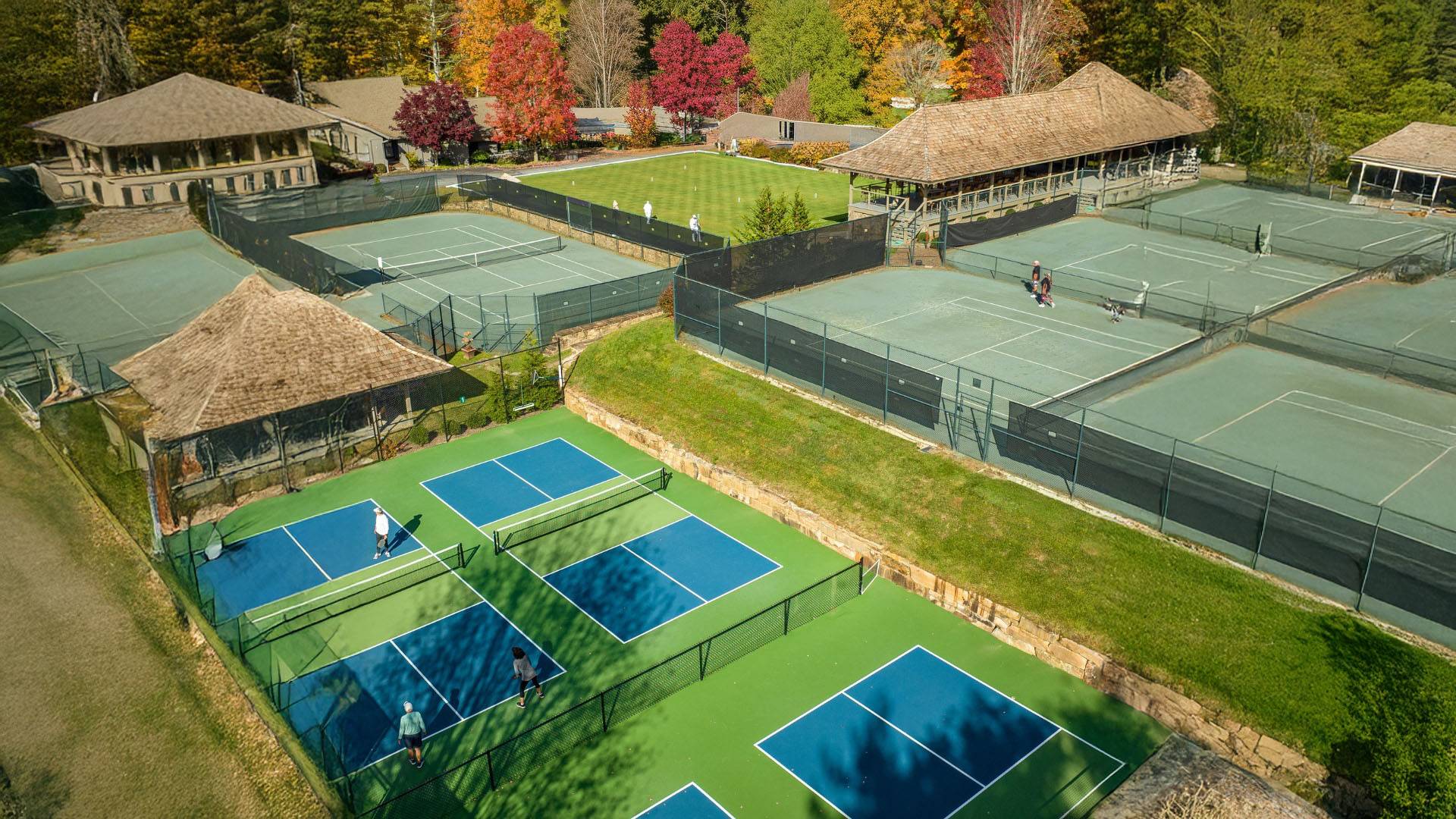Behind the Kitchen: Meet Chef Gerry Fong and the Culinary Magic at Burlingame

The mountains of Western North Carolina offer breathtaking views, but at Burlingame Country Club, the scenery isn’t the only thing that takes your breath away.
Walk into any of our six dining venues on a busy evening, and you’ll witness something special. The outdoor deck buzzes with conversation as members unwind after a round of golf. The Presidents’ Room hosts an intimate wine society dinner. And in the heart of it all, our kitchen runs like a precision engine, turning out dish after dish that earns genuine raves from some pretty discerning palates.
The person orchestrating this culinary symphony? Executive Chef Gerry Fong, whose journey to Burlingame reads like a foodie’s dream itinerary.

From Coast to Campus to Mountains
Chef Fong didn’t take the typical path to our mountain retreat. After graduating from the Culinary Institute of America, he cut his teeth at a Ritz Carlton in California, where attention to detail isn’t just expected—it’s everything. From there, he explored the coastal flavors of North Carolina before spending three years as Executive Chef at North Carolina State University’s Centennial Campus, overseeing operations for the Alumni Center, Chancellor’s Residence, The State Club, and Lonnie Poole Golf Course.
That university experience might surprise some people, but it actually prepared him perfectly for club life. Managing multiple venues, adapting to different dining styles throughout the day, and keeping hundreds of people happy? That’s exactly what we need at Burlingame.
“Every venue tells a different story,” Chef Fong explains while reviewing the evening’s prep. “The Overlook Lounge needs quick, satisfying bites for members grabbing a beer after tennis. The Presidents’ Room calls for something more refined. Our Elevation 3042 restaurant covers everything from morning coffee to late dinner. You can’t just have one style and call it good.”
Farm-to-Table Isn’t Just a Buzzword Here
What sets Chef Fong apart isn’t just his technical skills or impressive resume. It’s his genuine relationships with local farmers and purveyors. While many restaurants talk about farm-to-table, he actually drives to meet the people growing his ingredients.
“When you’re working at 3,000 feet elevation, surrounded by some of the richest agricultural land in the country, why wouldn’t you use what’s right here?” he asks. “I’ve got farmers calling me when the first spring onions come in, or when they’ve got the perfect tomatoes. That’s how you build menus that actually taste like where you are.”
This philosophy shows up in everything from the seasonal specials that change based on what’s available locally, to the way he sources proteins from regional suppliers who share his commitment to quality.
The Art of Club Dining
Club dining presents unique challenges that most restaurants never face. Members eat here regularly—sometimes multiple times per week. They bring guests they want to impress. They expect consistency, but they also crave variety. And unlike a restaurant where people might visit once or twice a year, club members become genuine critics of your work.
“I love that pressure,” Chef Fong admits. “When Casey and Carol Ann tell me they never had a meal they didn’t enjoy, or when longtime members bring their adult children for dinner and want to show off the club, that means something. These people could eat anywhere, but they’re choosing to eat here.”
The numbers back up that confidence. Our Wednesday buffet has become legendary among members, with some planning their week around it. The wine society dinners regularly sell out. And members frequently tell us they use our dining venues for their most important business meetings and family celebrations.
More Than Just a Chef
What strikes you about Chef Fong isn’t just his culinary expertise—it’s his understanding of what makes club life special. He gets that the couple celebrating their anniversary at the Presidents’ Room doesn’t just want great food; they want an experience that feels worthy of the moment. He knows that the foursome grabbing lunch at the turn needs food that’s delicious but won’t slow them down for the back nine.
His background shows in unexpected ways. Those years at the Ritz taught him that service details matter just as much as seasoning. His time on the coast introduced him to techniques that work beautifully with mountain ingredients. And his university experience showed him how to manage multiple dining concepts without losing quality in any of them.
“Food Network featured me on ‘Cutthroat Kitchen’ a few years back,” he mentions almost as an afterthought. “That was fun, but honestly, making sure our members have something special every time they walk through our doors? That’s the real challenge I care about.”
A Kitchen That Never Stops
Visit our kitchen during lunch prep, and you’ll see controlled chaos. Staff members work their stations with the kind of easy efficiency that only comes from repetition and mutual respect. Chef Fong moves between stations, tasting, adjusting, teaching. The pace never lets up, but somehow it never feels frantic.
“From a quick lunch at the turn to a multi-course dinner for the wine society, our kitchen is a non-stop engine of precision, production, and what I like to call ‘YUMMY perfection,'” he explains, using the club’s own description with obvious pride. “But that only works if everyone on the team knows their role and trusts each other.”
That team approach extends beyond the kitchen. Our servers know the stories behind the dishes. Our bartenders can recommend wines that pair perfectly with the evening specials. And our event staff understand how to transform our spaces to match the occasion.

The Burlingame Difference
What makes dining at Burlingame special isn’t any single thing—it’s the combination of elements that come together when someone truly cares about their craft. Chef Fong brings technical expertise, sure, but he also brings genuine enthusiasm for creating memorable experiences.
Whether you’re grabbing a coffee and pastry at Elevation 3042 before your morning round, enjoying a leisurely lunch on the outdoor deck, or celebrating a special occasion in the Presidents’ Room, you’re not just getting a meal. You’re getting food prepared by someone who understands that dining is about more than sustenance—it’s about bringing people together, marking special moments, and creating the kind of memories that make you want to come back.
Ready to experience Chef Fong’s culinary artistry for yourself? Contact us at (828) 966-9200 to schedule your personal tour and discover why our members call Burlingame “The Best of Times” in the mountains of North Carolina.












